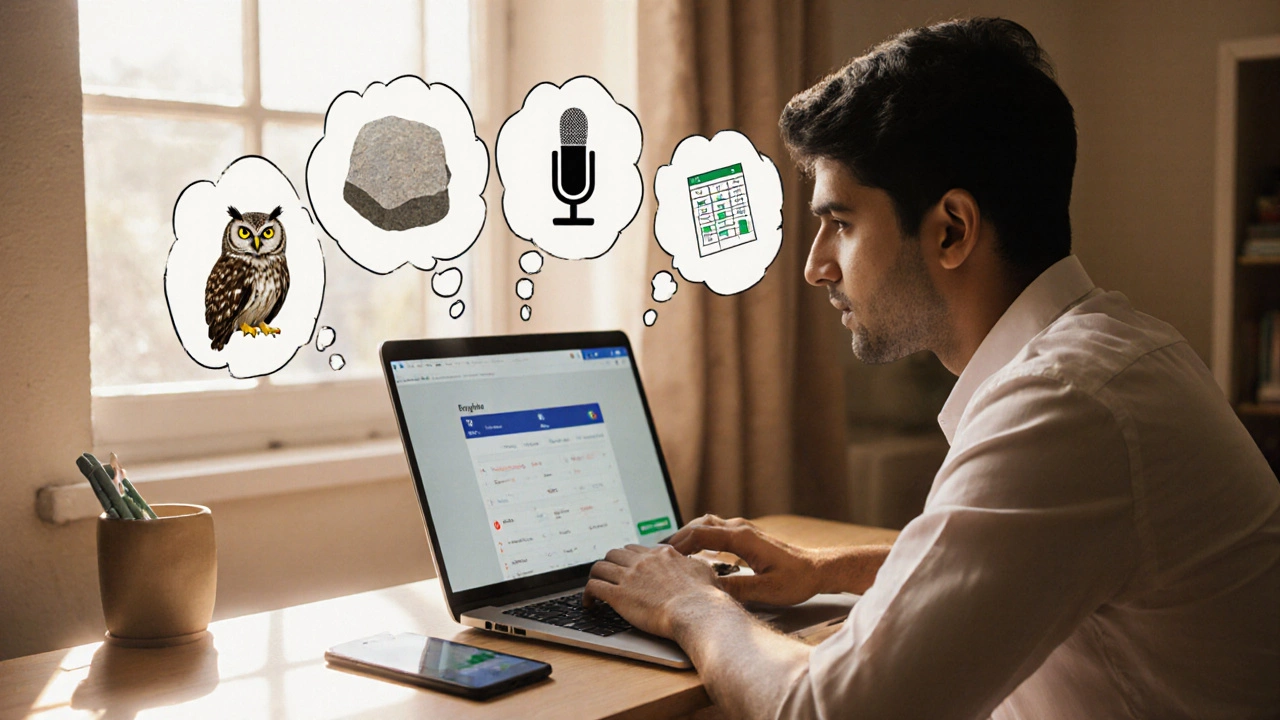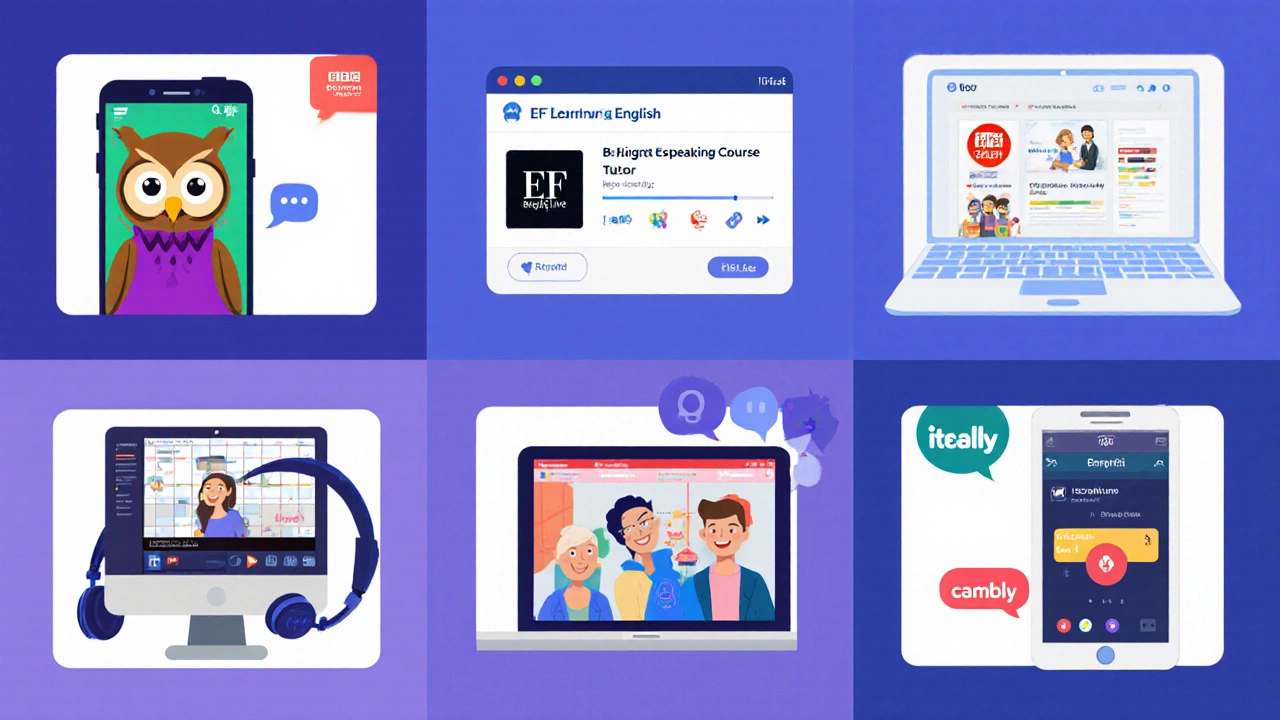
English Speaking Course Finder
Find Your Perfect English Speaking Course
Answer a few simple questions to get personalized recommendations for beginner English courses that match your learning style, schedule, and budget.
Quick Summary
- Identify your learning style: self‑paced apps vs. live tutoring.
- Set a realistic budget - many quality options start under $15per month.
- Look for courses that focus on real‑world conversation, not just grammar.
- Combine a structured curriculum with daily speaking practice for fastest fluency.
- Track progress using measurable goals like "order food in English" or "hold a 5‑minute chat".
When you start learning to speak English, the biggest question is which course will actually move the needle. There are dozens of apps, platforms, and tutors promising rapid results, but not all of them fit a beginner’s needs. This guide breaks down the key factors you should consider, reviews the top six beginner‑friendly courses available in 2025, and hands you a side‑by‑side comparison so you can pick the perfect match for your schedule, budget, and learning style.
How to Choose the Right Beginner Course
Before diving into specific recommendations, clarify three things that will narrow the field:
- Learning format: Do you prefer bite‑size app lessons you can do on a commute, or live conversations with a teacher?
- Time commitment: Can you spare 10 minutes a day, or are you ready for a 45‑minute lesson three times a week?
- Budget ceiling: Are you comfortable with a subscription, or do you need a one‑time purchase?
Next, match those preferences against these essential criteria for a beginner‑level English speaking course:
- Pronunciation focus: Courses should include phonetic drills, mouth‑shape videos, and native‑speaker audio.
- Conversation practice: Look for role‑plays, real‑time speaking prompts, or tutor‑led dialogues.
- Progress tracking: Badges, level meters, or weekly speaking challenges keep motivation high.
- Community support: Forums or study groups let you practice with peers.

Top Beginner English Speaking Courses in 2025
Duolingo English is a free‑to‑start language‑learning app that combines gamified lessons with a built‑in speaking component. It offers short, interactive drills that prompt you to repeat phrases aloud, and an AI‑driven pronunciation checker gives instant feedback. The app’s strength lies in its daily streak system, which nudges beginners to practice at least 5 minutes every day. Pricing: free tier, Premium $12.99/month for ad‑free experience and offline access.
Rosetta Stone English is a classic immersion‑based platform that emphasizes speaking from day one. Its TruAccent speech recognition engine evaluates your accent against native speakers, and the curriculum progresses through real‑world scenarios like ordering coffee or checking into a hotel. Subscription plans start at $11.99/month, with a 3‑month discount package for beginners.
BBC Learning English provides free video lessons, podcasts, and interactive exercises. The "English at Work" series includes short dialogues and pronunciation tips tailored for beginner learners. Because it’s a public‑service resource, there’s no cost, though you’ll need to hunt for the speaking‑focused sections yourself.
EF English Live offers 24/7 live classes with certified teachers. Beginners start in a small “starter” group where the teacher conducts daily speaking drills, corrects pronunciation, and assigns short conversation homework. Pricing: $49/month with a 7‑day free trial.
italki connects learners with native‑speaker tutors for one‑on‑one video lessons. You can choose a tutor who specializes in conversation for beginners, set a fixed hourly rate, and focus entirely on speaking practice. Rates vary widely; many entry‑level tutors charge $10‑$15per hour.
Cambly provides instant access to on‑demand English tutors. No scheduling needed - simply click “Connect” and start a 15‑minute speaking session, making it perfect for spontaneous practice. Subscription starts at $13/month for 1hour of tutoring.
Side‑by‑Side Comparison
| Course | Price (per month) | Format | Pronunciation Tech | Live Speaking | Free Tier |
|---|---|---|---|---|---|
| Duolingo English | $12.99 (Premium) / Free | App‑based, gamified | Basic AI check | Community chat rooms | Yes |
| Rosetta Stone English | $11.99 | Web & mobile | TruAccent engine | Weekly group talks | No |
| BBC Learning English | Free | Video & audio | Manual speaker demos | None (self‑practice) | Yes |
| EF English Live | $49 | Live classroom | Live teacher feedback | Yes (group & 1‑on‑1) | No |
| italki | $10‑$15 per hour | 1‑on‑1 video | Teacher‑driven | Yes (customizable) | No |
| Cambly | $13 | On‑demand video | Live correction | Yes (instant) | No |
Practical Tips to Maximize Speaking Progress
Choosing a course is only half the battle. Here are three habits that turn passive learning into active speaking:
- Shadowing: Play a native speaker audio and repeat word‑for‑word, matching speed and intonation. Do this for 5‑minute clips daily.
- Speak before you think: Set a timer for 60 seconds and narrate anything you see - a street, a coffee mug, a meme. The goal is fluency, not perfection.
- Record & compare: Use your phone’s voice memo to capture a short dialogue, then listen side‑by‑side with the original. Note mismatched sounds and re‑practice.
Combine these drills with the structured lessons from your chosen platform, and you’ll notice measurable improvement in just a few weeks.
Common Pitfalls and How to Avoid Them
Beginners often fall into traps that stall progress. Spot them early:
- Focusing only on vocabulary: Knowing words doesn’t equal speaking. Pair new words with a sentence you actually say out loud.
- Skipping pronunciation feedback: Even a free app will flag mispronounced sounds; ignore it and you’ll lock in bad habits.
- Waiting for perfection: Perfectionism kills practice. Aim for intelligibility first, then polish.
Next Steps: Build Your Speaking Routine
Now that you have a shortlist, pick one course that aligns with your lifestyle and sign up for a trial. Set a concrete schedule - for example, "Duolingo lessons at 7am, plus a 15‑minute Cambly session at lunch" - and log your daily speaking minutes in a simple spreadsheet. Review your progress weekly: can you order a coffee without hesitation? If not, adjust your practice method.
Frequently Asked Questions
Do I need a fast internet connection for live speaking courses?
A stable connection of at least 2Mbps is enough for most video lessons. If you’re on a spotty network, opt for audio‑only sessions or apps like Duolingo that work offline after download.
Can I improve my accent without a native teacher?
Yes. Tools like Rosetta Stone’s TruAccent and the shadowing technique can refine pronunciation. However, occasional feedback from a native speaker (via italki or Cambly) helps catch subtle errors.
Is a free course ever good enough for beginners?
Free resources such as BBC Learning English and Duolingo’s basic tier provide solid foundations, especially if you discipline yourself with daily practice. For faster speaking gains, consider a low‑cost live tutor once a week.
How long does it usually take to hold a simple conversation?
Most beginners reach a comfortable 5‑minute dialogue after 8‑12 weeks of consistent daily practice (10‑15minutes plus one weekly speaking session).
What’s the best way to track my speaking improvements?
Record a 30‑second self‑introduction every two weeks. Compare recordings for fluency, pronunciation accuracy, and confidence. Note any recurring errors and target them in your next lesson.




